DOMINANT FORM: Gestures in Recent Photography & Video
April 7 - May 27, 2017 | Newspace, Portland, OR
Artists:
Dru Donovan | Brendan Fernandes | Cara Levine | Julien Prévieux | Mary Ellen Strom with Ann Carlson | Ben Thorp Brown
Overview:
The group exhibition Dominant Form examines distinct ways in which physical gestures serve as reflections of broader cultural narratives. In their photographs and videos, the participating artists distill motions that signify aspects of our collective value systems, identities, individual and societal structures, and social interactions. Their process reveals the interplay between the imprint we leave on our surroundings, and that which society leaves upon our own form.
Brendan Fernandes juxtaposes African masquerade objects with Classical French Ballet gestures to raise questions about the traditional presentation and reception of African culture in western institutions. Mary Ellen Strom and Ann Carlson collaborated with four New York attorneys to choreograph movements they commonly use in their daily lives as litigators navigating the juridical system. In creating gestural scenarios between inanimate objects, Cara Levine mirrors the power dynamics at play in interpersonal relationships with humor and metaphor. Julien Prévieux examines the choreography resulting from innovations that control how we operate our technological devices, and the ways they inform our social interactions. Dru Donovan works with both citizens whose rights have been violated by police as well as citizen activists demonstrating for policing reform to stage reenactments that represent their experiences of harassment and protest. Ben Thorp Brown examines the iconic language of capitalism through the hand signals once used on the trading floor of the Commodities Exchange.
Through the condensation of movement into a frame, the artists utilize and question the representational aspects inherent to the creation of images. In singling out select motions in this way, they are thus prompting us to re-examine which forces author our movement, and who might ultimately hold control over our bodies.
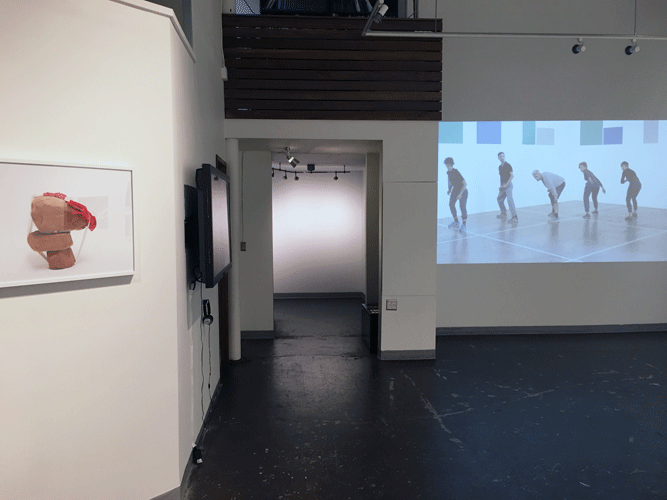


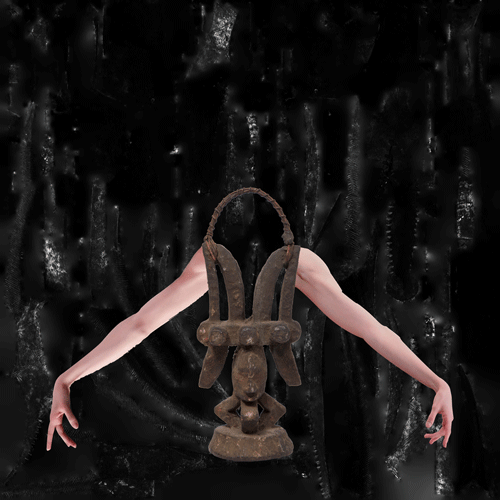
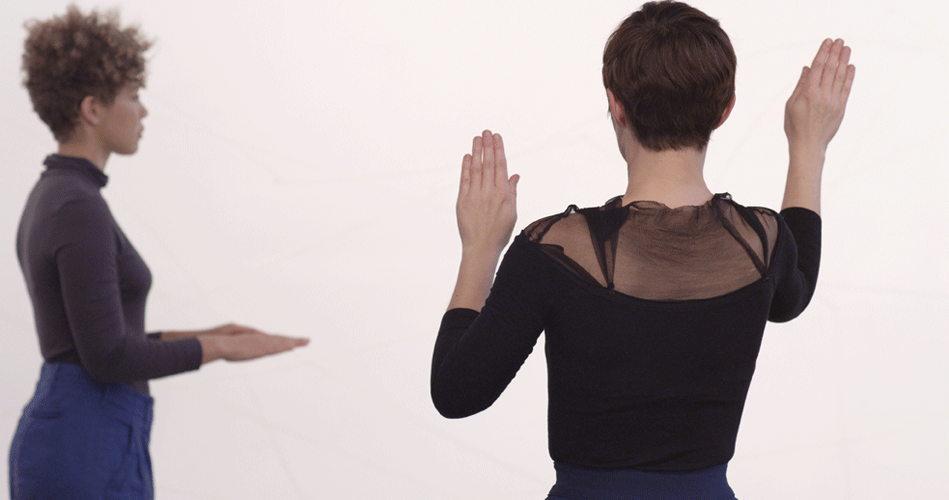
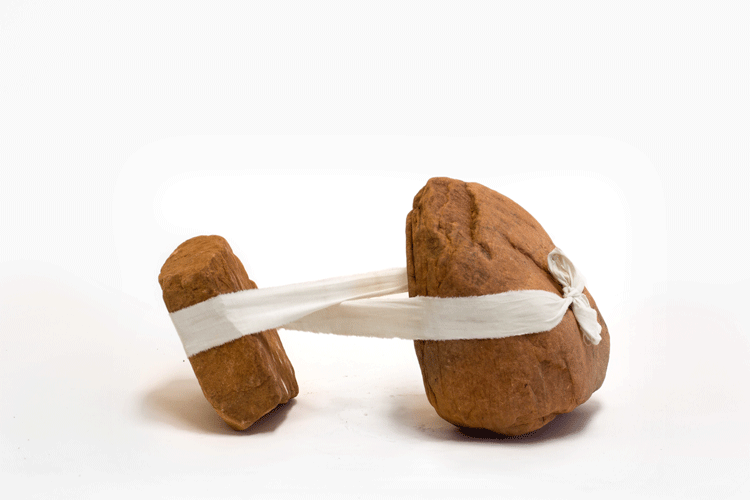
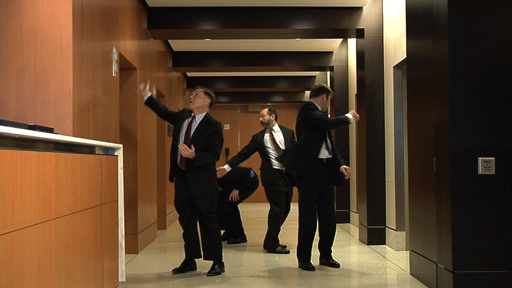
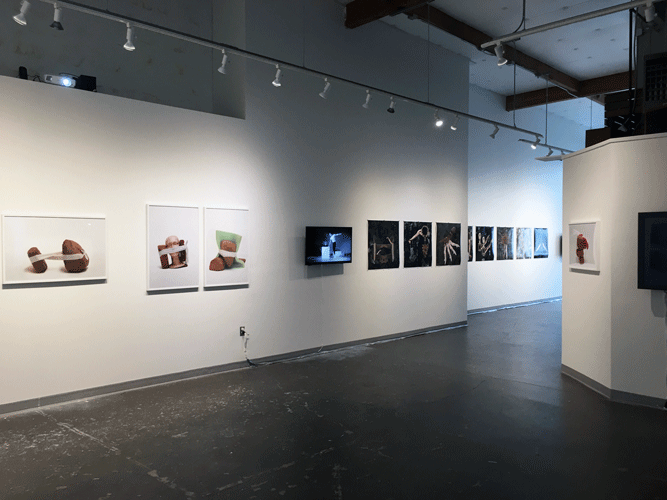
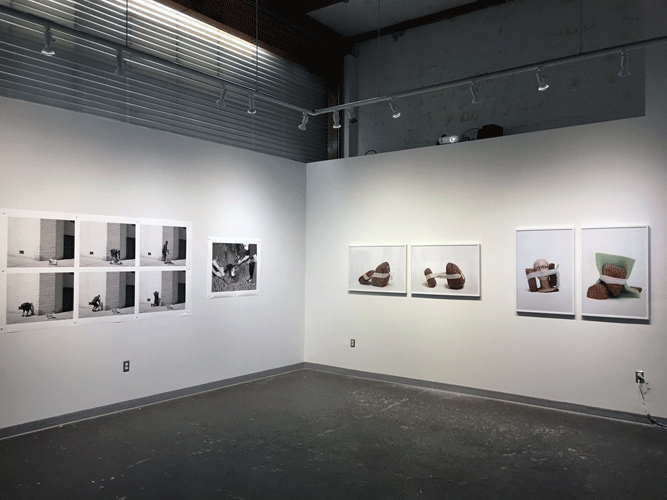

About the Works:
Ben Thorp Brown's Open Outcry examines the iconic language of capitalism in a speculative instructional video that follows a commodities trader guiding an actor in how to perform the hand gestures once used on the trading floor of the Commodities Exchange, where products like gold and oil are traded. These signals were originally created to overcome the chaotic and loud environment of the trading floor, but have since been replaced by computers and tablets in order to improve communication and prevent human errors.
Cara Levine's series Between a Rock and a Soft Place presents inanimate objects set up in gestural interactions—tugging, hugging, engulfing, restraining, supporting—mimicking the fragility of interpersonal relations, and the power dynamics at play within, upon and between human forms. In her video A Man to Jump Through we witness the artist moving through a male figure shaped in wire, a poetic action connecting the artist’s personal struggles to those of a society where men still dictate and restrict the rights and movements of women.
Through the study of choreography and dance, Brendan Fernandes’ recent works underline the cultural meanings that the body can encapsulate. Move in Place (2015) is a series of photographic collages juxtaposing body parts of Classical French Ballet dancers with digitally reassembled accouterments objects of West African masquerade derived from the African art collections of the Seattle Art Museum and the Agnes Etherington Art Gallery (Kingston, ON). In combining these two languages against the backdrop of an ambiguous and archival digital space, this seriesraises questions about the visual and discursive habits that shape understandings of African art within Western museums. The videoAs One portrays Classical French Ballet dancers bowing to African masks from the Seattle Art Museum collection in a gesture of etiquette and respect common in the French court of Louis XIV. This act is offered in response to the original perception of African culture in French museums, when it was pictured as primitive and exotic. Movements and bows in the French court were loaded with hierarchical order. Here they are offered to masks that observe these ritualized actions, but cannot dance themselves. Just as European countries like France removed masks and emptied out their meaning, these dancers now dance in a way that is deemed the epitome of elegance, but is also a representation of a power struggle.
For Sloss, Kerr, Rosenberg & Moore, Mary Ellen Strom and Ann Carlson collaborated with four New York attorneys to choreograph movements they commonly use in their daily lives as litigators navigating the juridical system. The resulting performance conveys how our labor is inscribed onto our bodies in highly individualistic ways.
In her ongoing series Positions Taken, Dru Donovan works with both people whose rights have been violated by police as well as activists demonstrating for policing reform to stage reenactments that represent their experiences of harassment. In one case, Donovan worked with young black men in the Bronx, NY who restaged their encounters with NYPD officers. In another, she worked with a family in St. Paul, MN to revisit their experience of police officers using force to stop a protest in reaction to the fatal shooting of Philando Castile by a local police officer. In distilling the encroachment on civilians’ bodies to a series of gestures, the images prompt a consideration not only of police misconduct and its emotional toll, but also a questioning of the role the camera plays in witnessing such imbalanced power relations.
Julien Prévieux's What Shall We Do Next? (sequence #2) examines the choreography brought forth by new technologies that control how we operate our devices. Gestures that have become second nature to most of us – swiping, tapping, dragging, scanning – are assembled into a movement piece that explores the mechanical and scripted nature of our current and future social interactions. The video opens with a lexicon of copyrighted hand gestures and continues with a demonstration of how our communication with others is mediated by these motions and, by extension, the corporations who authored and licensed them.